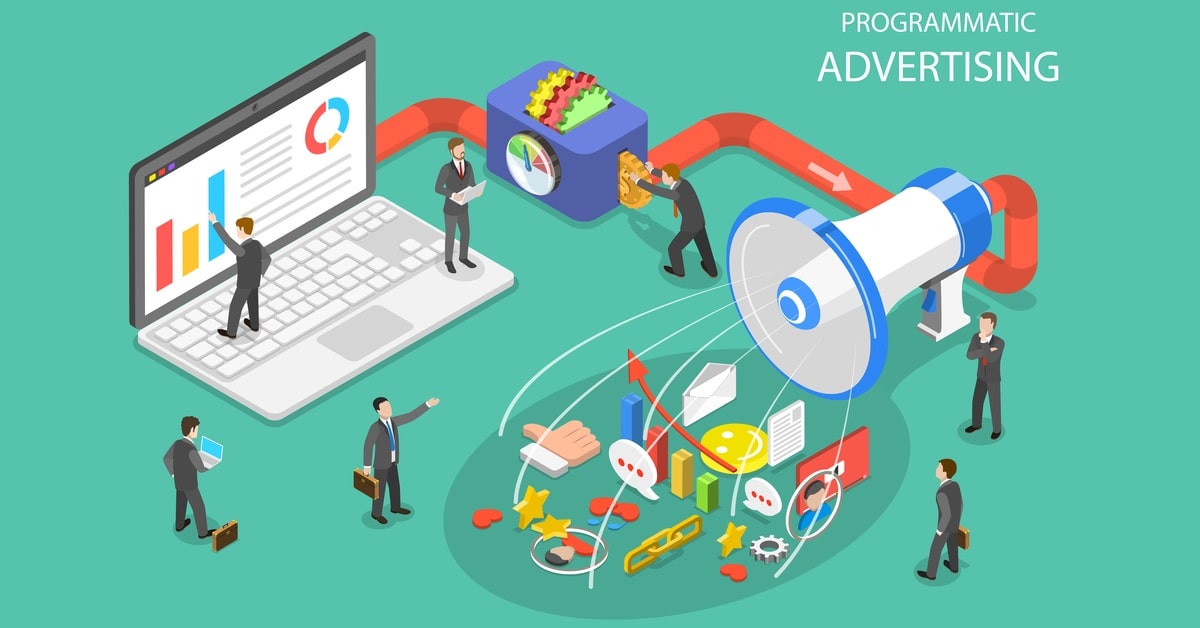
Programmatic advertising is the process of automating the buying and selling of ad inventory in real-time through an automated bidding system. In other words, Programmatic advertising refers to the use of software and algorithms to buy, place, optimise and measure digital ad campaigns. Its value lies in the fact that it is the most automated tool available to marketers, enabling them to manage their ad spend on a real-time basis and adjust campaign elements such as pricing and targeting in response to changing consumer behaviour. Programmatic advertising enables brands or agencies to purchase ad impressions on publisher sites or apps within milliseconds through a sophisticated ecosystem.
Programmatic advertising exists in a wide range of digital channels, including display, mobile, video, and social. Previously, programmatic campaigns has been reserved for larger budgets and media agencies, but the rapid rise of self-service tools gives smaller brands increased access to the technology and offers them the ability to compete with larger brands without going through expensive middlemen.
The digital advertising industry is growing rapidly, with programmatic now making up over two-thirds of the US digital advertising dollars. The foremost benefit of programmatic advertising is Flexibility. A business can choose to advertise on websites, blogs and apps that have a high potential for the engaged audience and return on sales. For example, a business can target its ads at times of day when consumers are more likely to be using its product.
Another benefit is that it reaches a wider audience at cheaper rates. It helps businesses to build their brand and engage with customers in a cost-effective way. The traditional/offline advertising model is inefficient as the manual process between buyers (advertisers/brands) and sellers (publishers) tend to be time-consuming, expensive and involves extensive paperwork, request for proposals (RFPs), and negotiation. The biggest shortcoming of the offline method is the lack of functionality to measure the Return on Investment (ROI).
On the other hand, programmatic advertising introduces an elaborate system that relies less on humans and more on programs to complete this process and display ads across the internet.
The artificial intelligence (AI) powered algorithms evaluate users based on their behavior, demographic data, cookie data, and other criteria to determine which ad should be shown to each user. Programmatic advertising allows the business to tap into multiple data sources to enhance campaign performance. Shifting to programmatic solutions across all phases of the ad campaign from ad creation to ad serving will increase efficiency, improve performance and allow capitalize on your data.
More and more brands are increasingly turning to programmatic to help improve awareness and consideration too. Through a clever mix of the right targeting and, crucially, a well-executed creative, programmatic advertising has proven it is nothing to be sniffed at when it comes to increasing brand metrics.
Programmatic advertising has many a perk, but one of the most invaluable benefits is the freedom it gives brands to press pause and make changes to campaigns in mid-flight. From a performance perspective, it allows optimizations to be made to up-weight the best performing audiences, sites, time of day and so on, helping to continuously boost results.
Programmatic Advertising is here to stay. With more and more businesses depending on maximizing ROI in the most cost-effective manner, the use of the right tools can help them achieve their targets and growth.